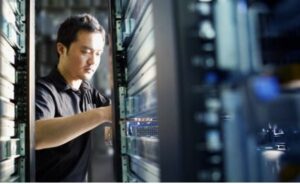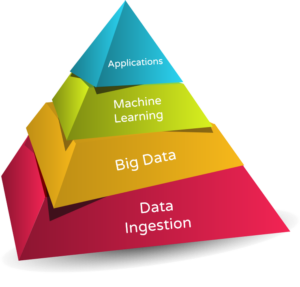This blog is based on content I co-authored with Vidyasagar Nallapati, an Advisory Consultant in our Dell Technologies Consulting Services practice in India.
The Internet of Things (IoT) is rapidly gaining traction—and for good reason. Across industries, it is delivering efficiency gains, better customer experiences, and new revenue streams and business models.

However, to realize the full potential from IoT, organizations must do more than merely connect things. They must be able to leverage intelligence that can transform IoT data into business value as it flows from the edge to the distributed core and into the cloud. This means using the right architecture to support the massive amounts of IoT data generated every second, seamlessly integrating it into the existing Big Data environment, and placing the compute capabilities at the point of need based on what the data is being used for.
What does this new architecture look like? And how do you build it?
Before You Begin: Understand the Challenges of an IoT Solution
Implementing an IoT solution requires working across a complex ecosystem, including sensor hardware providers, big data platforms, service integrators, application developers and end users. This complexity introduces a multitude of technical challenges that need to be addressed—solutions fragmentation, data security and privacy, integration of IT and OT infrastructure, ubiquitous device connectivity to the Internet, and interoperability and standards, to name a few. Organizations must also be able to justify the considerable investment in IoT, taking into consideration both base and recurring cost.
Taking a Platform of Platforms Approach
The most effective approach for IoT is to build a layered ‘platform of platforms’ architecture, such as the one illustrated below. Using that approach, you can develop an effective IoT solution that is easy to maintain, scale, and has the flexibility to support cross-industry applications and rapid deployments.

This recommended reference architecture is the result of several years of designing and developing IoT ecosystems for organizations in energy, traffic, healthcare, and automotive industries. Our objective was to develop a cohesive IoT PaaS solution with the capabilities for data streaming, smooth ingestion, event processing and analytics, elastic hardware and software computing, machine learning compatibility, and end-user application integration.
How Does It Work?
An enterprise IoT platform needs to support new paradigms for software advancements while catering to business functions and applications. It must be able to capture sensor information, support real time ingestion of data in a distributed hardware and software system, process and normalize data, data science and insights, and end-user applications running on the platform as a service. These capabilities require an end-to-end platform covering systems from edge to core to cloud.
Let’s take a quick look at the essential components of this architecture, and their functions following the generic IoT process framework below:

- Sensor Communications and Connectivity—Sensors are connected to the primary stream systems by a direct Internet connection or by a gateway (such as the Dell Gateway 5100) that acts as an interface to and communicates with sensors in various protocols. Edge nodes provide connections to sensors, actuators, control systems, and assets.
- Edge Data Manager—After connecting with sensors, the gateway software tags them through an edge sensor management system that registers and creates specific IDs for the sensors. Data from the sensors is then normalized to a standard format, stored for edge analytics, or exposed for further processing.
- Edge Analytics—The gateway analyzes the edge systems to provide business-critical information such as low latency.
- Platform Data Manager—This component acts as a backend platform service to handle ingestion, preprocessing, and aggregations of information in the data lake.
- Platform Analytics Manager—This component performs correlation analysis, forecasting, and predictive and prescriptive analysis on data in the data lake.
- Application Manager and Business Layer—End-user applications such as Pivotal Cloud Foundry can be plugged into the platform to support the user’s specific business needs.
- Security—A security protocol is enabled and logged at various touch points of data across the platform for further lineage and audit.
A Trusted Partner to Navigate the Complexities of IoT
 The good news is there is a steadily growing number of service providers available to help organizations navigate the complexities of IoT and capitalize on the wealth of business value that awaits. That’s precisely what Dell Technologies Consulting Services does. We help when and where you need it — and when it comes to Dell Technologies’ portfolio of industry leading products and solutions, no one does it better.
The good news is there is a steadily growing number of service providers available to help organizations navigate the complexities of IoT and capitalize on the wealth of business value that awaits. That’s precisely what Dell Technologies Consulting Services does. We help when and where you need it — and when it comes to Dell Technologies’ portfolio of industry leading products and solutions, no one does it better.
Our consultants can help you determine the capabilities needed to achieve your goals for IoT scalability and performance, review existing architecture and assess technology gaps, and develop an OT and IT roadmap and implementation plan. We can also help design and optimize your IoT platform, ensuring that it supports your business needs today and in the future.
Summary
If you’re just getting started with IoT, take a look at our ProConsult Advisory Services in which we work collaboratively with business and IT stakeholders to develop a transformation strategy and plan in six weeks or less. If your strategy has already been defined, we can work with you to design the optimal architecture through our IoT Technology Advisory Service (see related blog, Seeding the Right IoT Architecture at AeroFarms). We also provide a host of other data analytics services to implement and optimize solutions and infrastructure to drive value from data and support advanced techniques, such as artificial intelligence.


